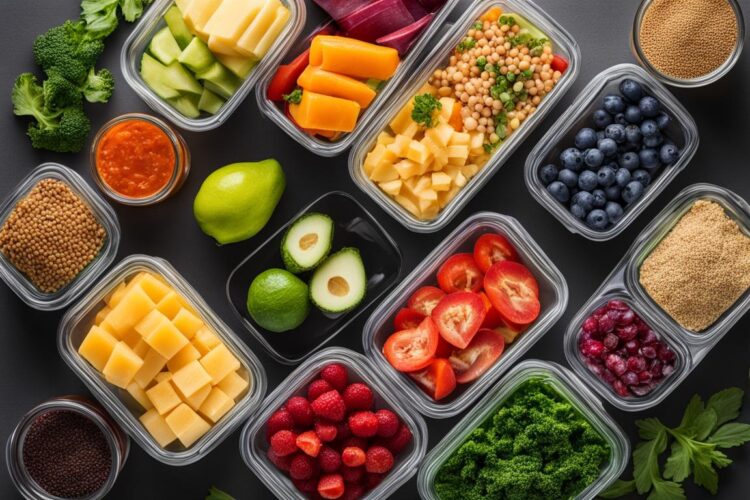Hello, fitness enthusiasts! Are you ready to take your workouts to the next level and achieve your fitness goals? Look no further than the power of gym exercises. Whether you're aiming to strengthen your muscles, improve your cardiovascular health, or increase your overall fitness level, incorporating a variety of gym exercises into your routine can help you on your journey.
From strength training exercises and weightlifting routines to cardio workouts and bodyweight exercises, the gym offers a multitude of options to challenge and push your body. With proper technique and consistency, you can see significant improvements in muscle tone, strength, and endurance.
In addition to those traditional gym exercises, you can also explore the benefits of resistance training, High-Intensity Interval Training (HIIT) workouts, stretching exercises, and functional training. These different training modalities can add variety to your routine and target specific muscle groups for optimal results.
Key Takeaways:
- Incorporating gym exercises into your fitness routine can help you boost your overall fitness and build muscle.
- Strength training exercises, weightlifting routines, and bodyweight exercises are effective for building muscle and increasing strength.
- Cardio workouts and HIIT workouts can improve cardiovascular health and endurance.
- Resistance training and functional training exercises can target specific muscle groups and improve overall strength and mobility.
- Stretching exercises are essential for flexibility and preventing injuries.
How Often To Work Out & How Much Should You Work Out to Gain Muscle?
When it comes to gaining muscle, finding the right balance of workout frequency and volume is crucial. Scientific studies have shown that working each muscle group at least two to three times a week is necessary to see noticeable changes and growth. Consistency is key, as regular workouts allow your muscles to adapt and become stronger over time.
To maximize muscle growth, it is recommended to focus on an ideal workout volume for muscular hypertrophy. This typically involves performing 3-4 sets of 8-12 repetitions per exercise. Aim to choose a weight that is challenging yet manageable, allowing you to maintain proper form throughout each set. This ensures that you effectively target the muscle groups and minimize the risk of injury.
For continuous progress, progressive overload is essential. Progressive overload is the gradual increase in the difficulty of your workouts over time. It can be achieved by increasing the weight lifted, the number of repetitions performed, or the intensity of the exercises. By constantly challenging your muscles, you stimulate further growth and development.
Remember, gaining muscle is a journey that requires consistency and patience. By incorporating the right workout frequency, workout volume, and progressive overload techniques into your fitness routine, you can optimize your muscle-building potential and achieve your desired results.
Summary:
- To gain muscle, aim to work each muscle group at least two to three times a week.
- The ideal workout volume for muscular hypertrophy is typically 3-4 sets of 8-12 repetitions per exercise.
- Choose a weight that challenges you without sacrificing proper form.
- Utilize progressive overload by gradually increasing the difficulty of your workouts over time.
| Workout Frequency | Workout Volume | Progressive Overload | Gain Muscle |
|---|---|---|---|
| Aim for at least 2-3 times a week | Perform 3-4 sets of 8-12 reps per exercise | Increase weight, reps, or intensity over time | Optimize muscle growth and development |
Free Weights Vs Machines: Which is Better for Gaining Muscle?
When it comes to gaining muscle, both free weights and resistance machines have their benefits. Each option offers unique advantages that can contribute to your muscle-building journey. Let's explore the differences between free weights and machines and how they can help you achieve your fitness goals.
The Benefits of Resistance Machines
Resistance machines are particularly suitable for beginners who are new to weightlifting or those who want to isolate specific muscles. These machines provide a guided range of motion that helps maintain proper form and reduces the risk of injury. In addition, they often come with adjustable weight stacks, allowing users to gradually increase the resistance as their strength improves.
Key takeaways:
- Resistance machines are ideal for beginners and isolation exercises.
- They provide a guided range of motion and minimize the risk of injury.
- Adjustable weight stacks allow for progressive overload.
The Advantages of Free Weights
On the other hand, free weights, such as dumbbells and barbells, require good form and engage multiple muscles to stabilize the movement. This engagement of multiple muscles not only enhances strength gains but also improves balance and core stability. Free weights offer a wide range of exercises that can target multiple muscle groups simultaneously, making them a versatile choice for building muscle.
Key takeaways:
- Free weights engage multiple muscles, enhancing strength gains.
- They improve balance, core stability, and functional strength.
- Free weights offer a wide variety of exercises for muscle development.
Choosing the Right Option
Deciding whether to use free weights or resistance machines ultimately depends on your fitness level, goals, and personal preferences. If you're new to working out or have specific muscle groups you want to target, starting with resistance machines can be beneficial. As you gain strength and become more comfortable with exercises, gradually incorporating free weights into your routine can help further enhance muscle gains.
Remember, proper form and technique are crucial when using either free weights or resistance machines. If you're unsure about how to perform an exercise correctly, consider working with a qualified fitness professional who can guide you and ensure you're maximizing your muscle-building potential.
Ultimately, a combination of both free weights and resistance machines can provide a well-rounded training program that targets different muscles and promotes overall muscle growth.
Should You Do Split Workouts for Muscle Gain?
If you're looking to maximize your muscle growth and optimize your workout routine, split workouts may be worth considering. Split workouts involve focusing on specific muscle groups or types of exercises on different days, allowing for adequate rest and recovery. By targeting different areas of the body on separate training days, you can ensure that each muscle group receives the attention it needs to grow and develop.
Classic muscle-building split routines include the popular push/pull/legs and chest & back/legs/shoulders & arms splits. These routines are designed to work different muscle groups on different days, helping to prevent overtraining and promote muscle growth.
Split workouts are effective when training 3-4 times a week, while full-body workouts are suitable for 2-3 times a week. The choice of split depends on individual preferences and goals.
By incorporating split workouts into your training routine, you can ensure that each muscle group is given enough time to recover and rebuild between sessions. This can be particularly beneficial for individuals looking to build muscle mass and increase overall strength. Additionally, split workouts allow you to focus on specific muscle groups or types of exercises, allowing for more targeted and efficient training sessions.
While split workouts can be highly effective for muscle growth, it's important to note that they are not the only approach. Full-body workouts, where you target all major muscle groups in a single session, can also be effective for building muscle. Ultimately, the choice between split workouts and full-body workouts depends on your personal preferences, goals, and schedule.
Regardless of the type of workout routine you choose, it's essential to prioritize proper nutrition and recovery to support muscle growth. This includes consuming adequate protein, maintaining a calorie surplus if your goal is muscle gain, and getting enough rest and sleep to allow your muscles to recover and grow.
Benefits of Split Workouts for Muscle Gain:
- Allows for targeted training of specific muscle groups
- Provides adequate rest and recovery for each muscle group
- Helps prevent overtraining and reduce the risk of injury
- Allows for more efficient and focused training sessions
- Can lead to faster muscle growth and strength gains
By incorporating split workouts into your training routine and combining them with proper nutrition and rest, you can optimize your muscle growth and achieve your fitness goals more effectively.
Remember to consult with a fitness professional or personal trainer to help design a split workout routine that is tailored to your individual needs and goals.
The Importance of Nutrition for Gaining Muscle
In order to maximize muscle growth and achieve your fitness goals, proper nutrition is essential. A balance of macronutrients and adequate caloric intake will provide your body with the necessary fuel for gaining muscle and optimizing performance.
When it comes to nutrition for muscle growth, there are a few key factors to consider:
Calorie Surplus
To build muscle, it is recommended to consume a slight calorie surplus. This means consuming 5-10% more calories than your maintenance level. A surplus of calories provides your body with the energy it needs to fuel intense workouts and support muscle growth.
Protein Intake
Protein is crucial for muscle growth and repair. Aim to consume at least 1.4 grams of protein per kilogram of bodyweight. Good sources of protein include lean meats, eggs, legumes, and dairy products. If you are aiming to lose weight while building muscle, consuming adequate protein becomes even more important to prevent muscle loss.
Carbohydrates for Energy
Carbohydrates are an essential macronutrient for athletes and fitness enthusiasts. They provide the body with the necessary energy to fuel intense workouts and support muscle growth. Include complex carbohydrates such as whole grains, fruits, vegetables, and legumes in your diet to maximize performance.
Remember, nutrition plays a crucial role in your fitness journey. By fueling your body with the right nutrients, you can optimize your muscle gain potential and achieve your desired results.
“Proper nutrition is the foundation for muscle growth. Without a well-balanced diet, your efforts in the gym may not yield the desired results. Fuel your body with the right nutrients and watch your muscles grow.” – Fitness Expert
Example Gym Workout Routine to Build Muscle
To effectively build muscle, it's important to have a well-designed gym workout routine. One popular routine for muscle gain is the push/pull/legs split. This routine focuses on different muscle groups on separate days, allowing for targeted training and proper rest and recovery.
The push day primarily targets the chest, shoulders, and triceps. Some key exercises to include are bench press, shoulder press, tricep dips, and chest flies.
Quote: “The push/pull/legs split is a great way to train for muscle growth and strength. It allows for focused training and gives each muscle group enough time to recover.” – Fitness Expert
The pull day concentrates on the back and biceps. Pull-ups, bent-over rows, lat pulldowns, and bicep curls are excellent exercises to incorporate into this workout.
On the leg day, target the lower body with exercises like squats, lunges, leg press, and calf raises. These exercises engage large muscle groups and promote overall strength and stability.
Sample Gym Workout Routine:
| Day | Workout |
|---|---|
| Monday (Push) |
|
| Wednesday (Pull) |
|
| Friday (Legs) |
|
Remember to prioritize compound movements, as they engage multiple muscle groups simultaneously. Warm-up exercises and cool-down stretches are essential for injury prevention and flexibility. Additionally, scheduling rest days between workouts is crucial for proper recovery and muscle growth.
Conclusion
Building muscle requires dedication and consistency in incorporating gym exercises, proper nutrition, and rest into your fitness journey. By focusing on compound exercises like squats, deadlifts, pull-ups, bench press, and shoulder press, you engage multiple muscle groups, promoting effective muscle building.
Remember to prioritize progressive overload, gradually increasing the intensity and challenge of your workouts. Maintaining good form throughout your exercises is crucial to prevent injuries and maximize results.
Building muscle takes time, so be patient with your progress. With regular strength training, a well-balanced diet that includes an adequate amount of protein, and enough rest and recovery, you can achieve noticeable results in a reasonable timeframe.
It's always beneficial to consult with a fitness professional who can guide you and tailor your gym exercises to your specific needs and goals. They can provide valuable insights and personalized recommendations to help you optimize your muscle building journey and attain the level of fitness you desire.
FAQ
How often should I work out to gain muscle?
It is recommended to work out a muscle group at least two or three times a week to see noticeable changes and growth.
How much volume should I aim for in my workouts to gain muscle?
For muscular hypertrophy, the ideal workout volume is 3-4 sets of 8-12 reps per exercise.
How should I select the weight for my exercises?
Select a weight that is challenging but allows for proper form and execution of the exercise.
What is progressive overload and how can I achieve it?
Progressive overload involves increasing the difficulty of an exercise over time. This can be achieved by increasing weight, reps, or intensity.
Are free weights or resistance machines better for building muscle?
Both free weights and resistance machines are effective for building muscle. Resistance machines are ideal for beginners and for isolating specific muscles, while free weights engage multiple muscles and provide a more challenging workout.
Should I do split workouts for muscle gain?
Split workouts, where you focus on specific muscle groups or types of exercises on different days, can be effective for muscle gain. The choice of split depends on individual preferences and goals.
How important is nutrition for gaining muscle?
Proper nutrition is crucial for efficient muscle growth. It is recommended to consume a slight calorie surplus and aim for sufficient protein intake to support muscle growth.
Can you provide an example gym workout routine to build muscle?
Sure! Here's a sample gym workout routine for muscle gain: – Push day: Chest exercises, shoulder exercises, tricep exercises – Pull day: Back exercises, bicep exercises – Legs day: Leg exercises (squats, lunges, leg press) Remember to prioritize compound movements and include warm-ups and cool-downs.
How long does it take to build muscle?
Building muscle takes time and dedication. With consistency and proper training, noticeable results can be achieved in a reasonable timeframe. However, the exact time required varies depending on individual factors such as genetics, training intensity, and nutrition.





